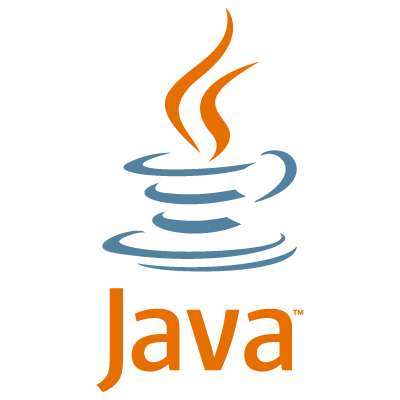Important Things to Know About Deep Learning (Programming Languages for Deep Learning)

Introduction:
In the past, computers simply performed tasks using a set of instructions given to them. Now, with significant advances in artificial intelligence (AI), computers are able to train with deep learning software without human intervention. Therefore, deep learning software has become very popular.
Deep learning is a promising and lucrative space that has achieved results that were thought impossible.
There are many resources for those who want to better understand Deep Learning. In this article, we will discuss the programming languages that all programmers are familiar with, as well as the programming languages for DeepLearning, the tools and the best DeepLearning software.
Programming languages for deep learning
To get started, a deep learning program developer should be proficient in these five programming languages:
![]()
Python: Familiarity with this simple and powerful programming language is essential for in-depth learning and other branches of artificial intelligence. Python has many libraries that make it easy to run AI algorithms. It also supports object-oriented and procedural programming.

Java: Because DeepLearning deals with artificial neural networks, search algorithms, etc., Java is a very good programming language. Because Java has a great user interface, easy debugging and high scalability. Java also uses the Swing and Standard Widget Toolkit, allowing you to create beautiful, data-rich graphics.

R: This programming language is widely used by statisticians to analyze and plot data. Also, R designed plots create mathematical symbols and formulas by countless packages.

C ++: It may be one of the oldest programming languages, but it is required for deep learning. The reason C ++ works well for deep learning is that it is compatible with applications that need to access large amounts of data. Because C ++ can be used for both low-level and high-level programming, it gives developers more control and efficiency.

Prolog: Prolog is a basic programming language in artificial intelligence. This programming language has a tree data structure, automatic return, and pattern matching features.

LIST : Another language used for artificial intelligence programming is Lisp. Lisp stands for List Processing. It is part of the family of computer programming languages and the second oldest programming language after Fortran, developed in 1958 by one of the fathers and founders of artificial intelligence, John McCarthy. Lisp evolved over time to become a powerful and dynamic language for programming.
Some believe that Lisp is the best artificial intelligence programming language because of the practical freedom it gives programmers. “Lisp is a language to do things you are told is impossible,” says Kenneth Pittman. This language is used in artificial intelligence because it is very flexible and fast for prototyping and testing, and is therefore a standard language for artificial intelligence programming. Lisp, for example, has a unique macro system that allows it to explore and implement different levels of mental intelligence.
Lisp benefits
- It is fast and efficient in programming due to the fact that it uses a compiler instead of an interpreter.
- Automatic memory management was created for Lisp; So it can detect useless files.
- Lisp provides special control for systems to maximize its utilization.
- Speed in making prototypes
- Dynamic construction of objects
- flexibility
Disadvantages of Lisp
- Limited programmers are familiar with this language.
- As a versatile AI programming language, Lisp needs to configure software and hardware to adapt.
The best deep learning software
Here are some of the best Deep Learning tools and software you should use in:
1. Keras

If you are looking for an in-depth learning tool that provides neural layers, modularity, module development capability and Python programming support, Cross is for you. Cross is a high-level neural network API that runs on Theano, TensorFlow, or CNTK.
Cross specializes in rapid testing with minimal latency. It can also run seamlessly on CPU and GPU.
Cross features:
• User friendly, with compatible and simple APIs that minimize the number of user actions.
• Easy development capability in new and old modules that allow full expression.
Written in Python, which is compact and allows for easy scalability and debugging.
2. Microsoft Cognitive Toolkit (CNTK)

For people who need a large data set and customize parameters, algorithms and networks; CNTK can be a good choice. CNTK is an open source deep learning program that is specifically designed for in-depth business-level learning.
In fact, this is one of the best Deep Learning platforms that allows you to easily combine popular models and implement SGD learning.
CNTK Features:
• Can be used in Python, C #, C ++ and Java applications
• The possibility of combining annular neural networks and neural networks
• Supports open neural network (ONNX) exchange format.
3. Neural Designer

Neural Designer, which is hailed as the best neural network software, is commonly used by large industries and organizations. Also, because it is based on neural networks, it is capable of advanced analysis and provides comprehensive results.
Neural Designer has become a favorite of many industries such as engineering, budgeting, healthcare, etc .; And with it, businesses and organizations are able to make better decisions and deliver better results.
Neural Designer Features:
Uses neural networks to analyze complex relationships, predict patterns, and identify data relationships.
• Easy to use with step-by-step guide on how the software works
• Provide tables, charts and visual charts for better visualization of results
• Uses CPU and GPU to reduce analysis time.
4. Wolfram Mathematica
![]()
Wolfram has powerful algorithms with parallelism and GPU computing. Therefore, it can solve large-scale problems. It is also very easy to use and if you need help, you can find a comprehensive tutorial on the Wolfram website.
Wolfram Features:
• Has data manipulation tools and matrices
• Efficient and powerful programming
• Excellent graphic support
5. Torch

Building scientific algorithms with speed and flexibility is Torch’s main goal. In addition, this in-depth learning software and scientific computing framework uses the LuaJIT programming language, making it easy and efficient to use.
Torch is open source software that offers packages in machine learning, signal, image and parallel processing.
Torch Features:
• Excellent user interface
• Numerical optimization paths
• Fast and efficient GPU support
• Embedded and contains ports to Android and iOS